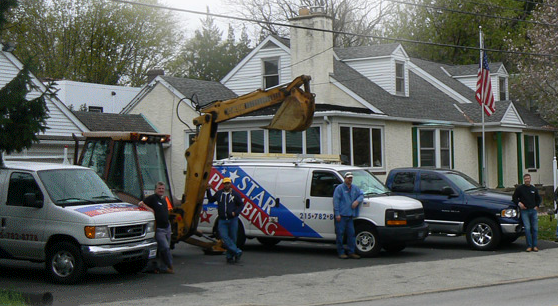How to Hide Plumbing in a Bathroom Vanity: A Step-by-Step Guide
Hiding plumbing in a bathroom vanity is a great way to keep the pipes and connections out of sight, creating a more streamlined look in the vanity area. This can be done by using angled pipes, flexible hoses, and other creative solutions. To begin, measure the exact length of pipe needed for each connection and cut it with a pipe cutter. Once the pipes have been cut to size, install connectors such as elbows, T-connectors, or Y-connectors as needed to make the necessary connections. Additionally, use flexible hoses where possible to reduce the number of angled fittings required. Next, attach mounting brackets to hold the pipes securely in place behind or underneath your vanity cabinet. Finally, seal any gaps with caulk or silicone sealant to protect your bathroom from water damage and ensure everything is airtight. Following these steps will ensure that your plumbing is both secure and hidden away from view.
Materials for Hiding Plumbing in a Bathroom Vanity
When it comes to hiding plumbing in a bathroom vanity, there are several materials that you’ll need. Pipes and joints are essential for providing a secure connection between plumbing fixtures and the drain. Sink base cabinets provide the structural support needed to hold up the vanity top and bowl, while vanity tops and bowls act as the finishing touch on top of the sink.
Tools Required for Hiding Plumbing in a Bathroom Vanity
In addition to the materials mentioned above, you’ll also need some tools in order to properly hide plumbing in a bathroom vanity. Clamps and cutters are essential for connecting each piece of pipe together, while plumbing tape helps to provide an extra layer of protection against water seeping out of any joints. You’ll also need a drill/driver and bits to ensure that all holes line up correctly before you start installing your pipes.
Hiding Pex Plumbing in a Bathroom Vanity
When it comes to working with PEX piping, there are certain steps that must be taken in order to ensure that everything is properly connected. Connecting pipes at the nipples is one of the first steps and requires that you line up each pipe with its corresponding nipple before tightening it down with clamps. Once all the pipes are connected, you can then run the main inlet for the sink and make sure everything is properly sealed off before moving on to the next step.
Hiding Copper Piping In A Bathroom Vanity
If you’re using copper piping instead of PEX, then there are some additional steps that must be taken when hiding plumbing in a bathroom vanity. Installing shutoff valves is an important part of this process as they provide an easy way for you to turn off water if something goes wrong without having to turn off your entire house’s water supply. Additionally, connecting your waste drain lines is also another necessary step when trying to hide copper piping in your bathroom vanity.
Modifying Rough-in Plumbing To Fit A Bathroom Vanity
When dealing with rough-in plumbing, there may be times where some modifications must be made in order for it to fit into your bathroom vanity correctly. This often involves cutting out irregularly shaped plates or adjusting lengths of supply lines so they fit perfectly into place without any leaks or gaps between them. Additionally, reassembling pipes in an aesthetically pleasing manner can also help make your installation look much more professional than if it was simply thrown together haphazardly. After all these steps have been taken care of, sealing all plumbing into the bathroom vanity itself and caulking with silicone sealants will help ensure everything stays put even during heavy use or extreme temperatures changes over time. Finally, fitting off-the-shelf accessory kits can help ensure that all other elements such as ventilation systems are connected properly so they function as intended when needed.
Installing Toilet Parts with a Bathroom Vanity
When it comes to installing toilet parts in a bathroom vanity, there are a few important steps to take. First, it is essential to cover filter screens and ensure that all cutouts are properly measured for the toilet tank bolts to fit securely into the base of the vanity. This will ensure that the toilet parts are installed correctly and safely.
Adjusting Water Supply Lines
The next step is to adjust the water supply lines. This should be done carefully and with precision, as any leaks or improper connections can cause significant damage and lead to expensive repairs down the line. It is best to use quality materials such as copper pipes or flexible tubing when connecting water supply lines. Additionally, make sure all connections are thoroughly sealed with plumber’s tape or other approved sealant.
Concealing Wiring and Electrical Components
The last step in hiding plumbing in a bathroom vanity is concealing any wiring or electrical components. This can be done by first marking out visible areas of the wall where wiring needs to be placed. Additionally, it is important to plan ahead for all electrical fixtures that will need to be connected. For example, if you intend on installing a light fixture over the vanity, make sure you have junction boxes, wiring, and connectors ready for installation prior to beginning any work. Using these techniques will help ensure that all wires and electrical components remain hidden behind walls for a clean, finished look in your bathroom space.
FAQ & Answers
Q: What Materials Are Needed To Hide Plumbing In A Bathroom Vanity?
A: The materials needed to hide plumbing in a bathroom vanity include pipes and joins, sink base cabinets, vanity tops and bowls, clamps and cutters, plumbing tape, a drill/driver and bits.
Q: How Do You Hide Pex Plumbing In A Bathroom Vanity?
A: To hide Pex plumbing in a bathroom vanity you will need to connect the pipes at the nipples and run the main inlet for the sink.
Q: How Do You Hide Copper Piping In A Bathroom Vanity?
A: To hide copper piping in a bathroom vanity you will need to install shutoff valves and connect the waste drain.
Q: How Can You Modify Rough-In Plumbing To Fit A Bathroom Vanity?
A: Modifying rough-in plumbing to fit a bathroom vanity involves cutting out irregularly shaped plates, adjusting lengths of supply lines, reassembling pipes in an aesthetically pleasing manner, sealing plumbing into the bathroom vanity, caulking with silicone sealant and fitting off-the-shelf accessory kits.
Q: What Techniques Are Used For Concealing Wiring And Electrical Components In A Bathroom Vanity?
A: The techniques used for concealing wiring and electrical components in a bathroom vanity include marking out visible areas of the wall, planning ahead for all electrical fixtures, using junction boxes, wiring and connectors.
In conclusion, hiding plumbing in a bathroom vanity is a straightforward process that can be completed in a few simple steps. By designing the vanity with an access panel, cutting the access hole, and connecting the plumbing lines to the sink, you can easily conceal pipes and other plumbing components in your bathroom vanity. With careful planning and instruction, you can have a beautiful vanity that hides all of your plumbing for a more aesthetically pleasing look.
Author Profile

-
Star Plumbing, located in Elkins Park, PA, is a full-service plumbing company owned and operated by Mitchell Gordon. Since its inception, Star Plumbing has been providing its customers with reliable, quality plumbing services.
The Star Plumbing website offers informative articles on DIY plumbing and plumbing equipment, offering readers helpful advice and tips on how to take care of their own plumbing needs. This is a great resource for those who are looking to tackle a plumbing project themselves, as it provides useful information and advice on how to safely and successfully complete a plumbing job. Additionally, the website provides detailed descriptions of the various plumbing tools and equipment that are available, as well as detailed instructions on how to use them.
Star Plumbing’s website is a great resource for anyone with plumbing needs. Whether a customer is looking for advice on how to take care of their own plumbing or to schedule service from Star Plumbing, the website offers helpful advice and information for all their plumbing needs.
Latest entries
- April 12, 2024Plumbing Equipment And AccesoriesI Tested And Ranked The Best 10 Inch Rough In Round Toilet In 2024: And Here’s What I Found
- April 12, 2024Plumbing Equipment And AccesoriesI Tested And Ranked The Best Stone That Cleans Toilets In 2024: And Here’s What I Found
- April 12, 2024Plumbing Equipment And AccesoriesI Tested And Ranked The Best Heat Tape For Plumbing In 2024: And Here’s What I Found
- April 12, 2024Plumbing Equipment And AccesoriesI Tested And Ranked The Best Kaboom Toilet Bowl Tablets In 2024: And Here’s What I Found
